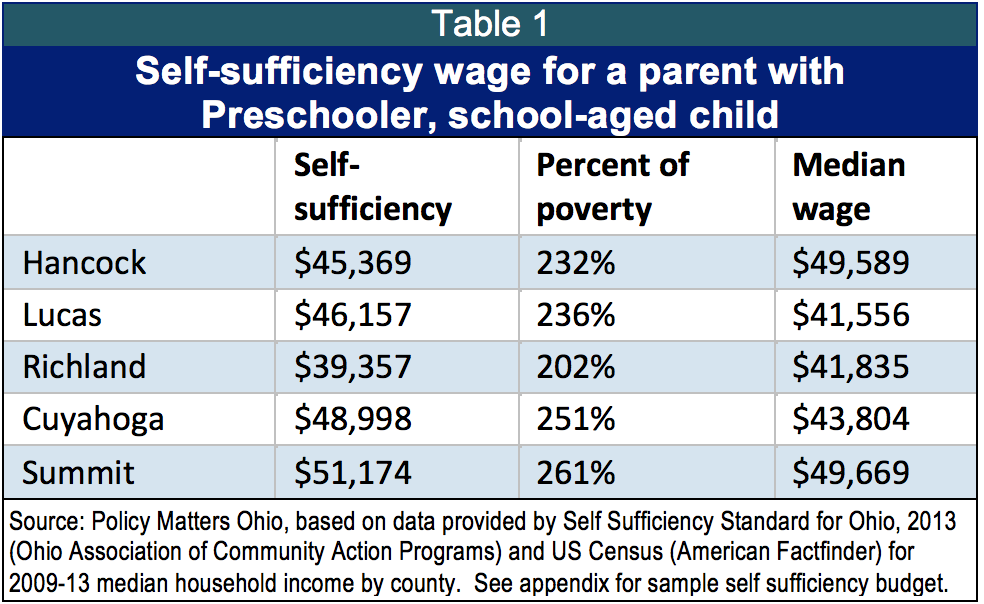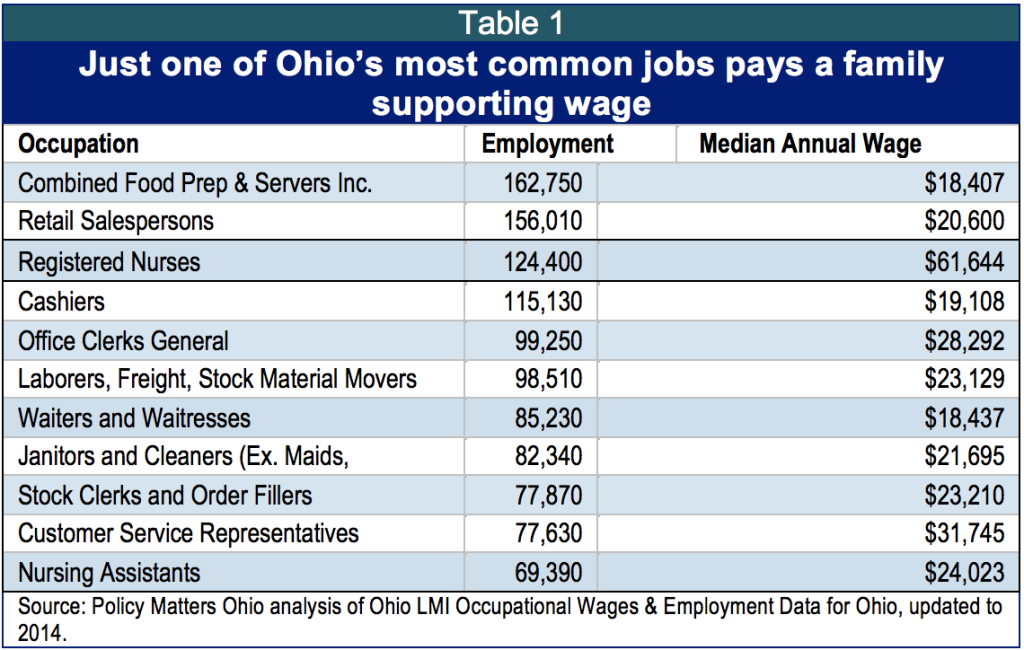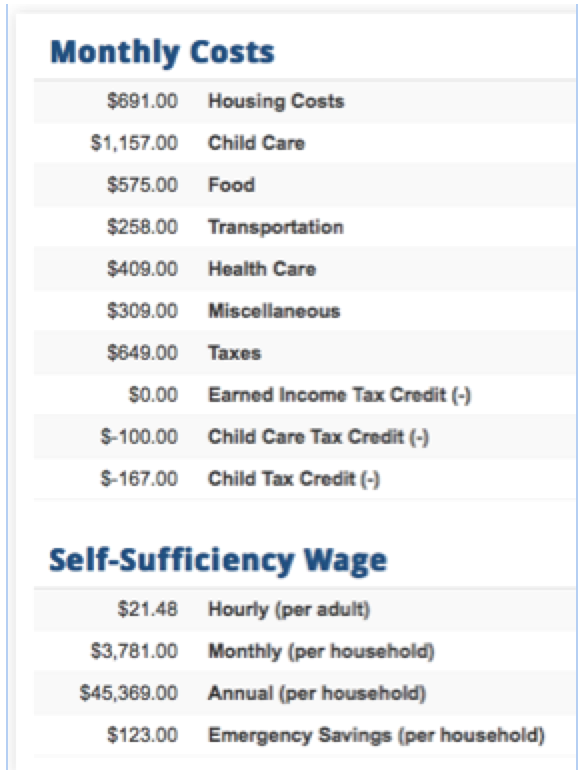
Testimony: Work supports, food aid are essential in low-wage economy
March 19, 2015
Testimony: Work supports, food aid are essential in low-wage economy
March 19, 2015
Improve supports, eliminate Medicaid premiums for low-wage working families, Policy Matters Ohio tells lawmakers.
Contact: Wendy Patton, 614.221.4505
Budget testimony to the House Finance Subcommittee on Health and Human Services
Good afternoon Chairman Sprague, Vice Chair Sears, Ranking Minority Member Sykes and members of the subcommittee. I am Wendy Patton, a project director at Policy Matters Ohio, a nonprofit, nonpartisan organization with the mission of creating a more prosperous, equitable, sustainable and inclusive Ohio. Thank you for the opportunity to testify regarding House Bill 64.There is great attention to public assistance and work in this budget period. We believe the problem is not in people, nor in the intentions of the programs to help poor families. The problem is that the economy is not producing enough jobs to allow many families to be self-sufficient. Programs like childcare assistance, food aid and Medicaid help bridge the gaps. Lawmakers could help families achieve self-sufficiency by making sure work supports like childcare address the realities of the work schedules and pay levels of low-wage jobs and that programs that address basic human needs of health and food do not have barriers that limit access.
Working families with children need an income greater than 200 percent of the federal poverty level to reach self-sufficiency in most Ohio counties. Table 1 highlights five Ohio counties. In some places, the county median wage is lower than the self-sufficiency level. In other words, most people make less than it costs to be self-sufficient. Many families struggle.
In the examples in Table 1, the average cost of childcare alone comprises almost a third of family income at the self-sufficiency wage. Families earning less struggle more with the cost of childcare and all the costs of living and working.
Ohio’s private economy is not producing enough jobs that allow families to be self-sufficient. At median wages, about a third of Ohio’s private sector jobs[1] leave a family of three – a parent and two children – eligible for Medicaid. This is not at entry-level wages, where you would expect people to move up – this is at median wage. Ohio’s 12 largest occupational categories include just one, registered nurse, which allows a family with kids to be self-sufficient. The rest leave families eligible for, and needing, work supports.
Programs of public assistance are critically important in the low-wage economy. The expansion of Medicaid under the Affordable Care Act allowed a half million Ohioans to see a doctor and prevent or manage common illnesses like heart disease or diabetes before they become disabling. It also brought substantial federal money into Ohio. The executive budget makes the smart and compassionate choice in reauthorizing Medicaid expansion for all eligibility groups. This benefits individuals, families, communities and the Ohio economy. It also protects and strengthens the health care system, a major employer in many communities.
We urge you to eliminate the added monthly premium for some Medicaid enrollees included in the executive budget. Studies show that when people have to choose between rent, food, transportation to work, the needs of children, and preventative health care, preventative health cre loses.[2] People living very close to poverty should not have to pay monthly premiums on top of co-pays for health care. We should be trying to stabilize families so they can move ahead, not to introduce new and potentially destabilizing elements into difficult daily lives.
We were encouraged to see improvements in the public childcare program in the executive budget. The executive budget proposes to smooth the childcare cliff so no one has to turn down a raise because they would lose childcare. Program data, however, indicates few families in the program see earnings rise to this level. We encourage you to fix the larger problems in the program as well. Most importantly, we should restore initial eligibility in the program to 200 percent of poverty. The primary reason for case closure in public childcare is job loss. Today's volatile job market often makes it difficult if not impossible for parents to find work within the allowed timeframe, and if you miss that timeframe, you have to re-enter the program at the bottom of the earning scale, at the initial eligibility level of 125 percent of poverty. You can fix this by raising initial eligibility so parents do not have to give up gains in the labor market to re-enter the program.
We also ask you to fix the cracks in the program through which people fall out of eligibility. Parents can easily lose childcare eligibility for no fault of their own. The low-wage job market is unpredictable. Retail stores reduce staff during slow periods. Restaurants change employee hours. Temporary jobs disappear. Poor families move frequently, so mailed redetermination notices are missed. You can help stabilize low-wage families by accepting children into the classroom for a year at a time. This helps the parent work, because stable childcare permits a sustained job search. The real beneficiary is the child, who needs a familiar setting and a degree of stability to learn. Stability helps everyone in the classroom as well. A classroom full of changing toddlers can be chaotic: no one is learning. A stable classroom of familiar faces is one in which everyone is learning. This classroom will have a high return on the state’s investment.
There has been profound loss of funding in some social services since the recession, both work supports and other programs that help with a range of family needs. The state has never played a big role in some services but with the elimination of revenue sharing, additional state resources are needed. Restoration may take significant investment over time. This is by no means a comprehensive list of the cuts and needs, just examples.
- Public childcare assistance had initial eligibility of 200 percent of poverty in 2009; now Ohio has the third lowest threshold in the nation at 125 percent of poverty. We estimate the cost of restoring eligibility would be around $140 million.
- Adult Protective Services in Ohio were better funded twenty years ago – briefly, and in inflation-adjusted dollars - than today’s budget proposal. Today we have a larger aged population and know much more about the extent of the silent epidemic of elder abuse.
- Children’s services levies lost $39 million in the initial phase-out of tax reimbursements in FY 2012-13[3] and will lose another $10 million a year by 2017 compared with 2014.[4] Funds provided in the budget bill of 2014 and proposed in the current budget do not replace the losses. The Public Children’s Services Association of Ohio has asked for $23.2 million dollars a year to provide adequate protective services to vulnerable children.[5]
- Ohio twice rejected the federal waiver that would have maintained eligibility for food aid under federal programs for most of the state, and so now needs to use state dollars to meet demand for food aid at food banks across the state. The Ohio Association of Foodbanks has asked for $20 million a year to provide 56 million meals for hungry Ohioans.
Mr. Chairman, thank you for this opportunity to testify. I am happy to answer questions.
###
Policy Matters Ohio is a nonprofit, non-partisan research institute
with offices in Cleveland and Columbus.
Appendix: Monthly Costs for Hancock County – Self Sufficiency Budget
Source: Ohio Association of Community Action Agencies Self-Sufficiency Calculator at http://www.oacaa.org/self-sufficiency-calculator/
[1] This tally is taken from the Ohio Labor Market Information’s data tool for Occupational Wages & Employment (http://ohiolmi.com/oes/oes.htm) and is calculated based on occupational categories for which both median wage and total employment are provided. Out of 4.9 million jobs, 1.7 pay, at the median, less than $27,724, which is 138 percent of poverty or the ceiling for Medicaid eligibility for adults.
[2] Wendy Patton, “Financial Requirements Prevent Medicaid Patients from Getting Needed Care,” Policy Matters Ohio, February 2015 at http://www.policymattersohio.org/medicaid-feb2015
[3] Wendy Patton, “Intensifying Impact: State Budget Cuts Deepen Pain for Ohio Communities, November 2013 at http://www.policymattersohio.org/county-budgets-nov2012
[4] Testimony of Suzanne Dulaney, Executive Director of the County Commissioners Association of Ohio, to the House Ways and Means Committee, March 10, 2015.
[5] Public Children’s Services Association of Ohio, 2016-17 Biennial Budget Priorities at http://www.pcsao.org/AboutPCSAO/2015/PCSAOBudgetPriorities16-17final.pdf
Tags
2015Budget PolicyRevenue & BudgetWendy PattonWork & WagesPhoto Gallery
1 of 22


